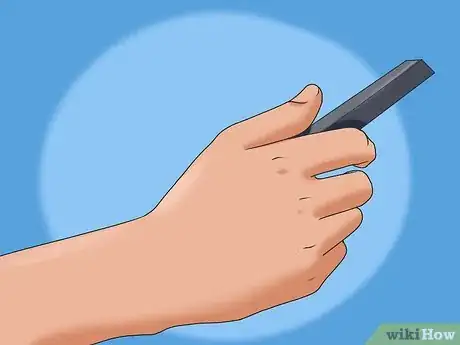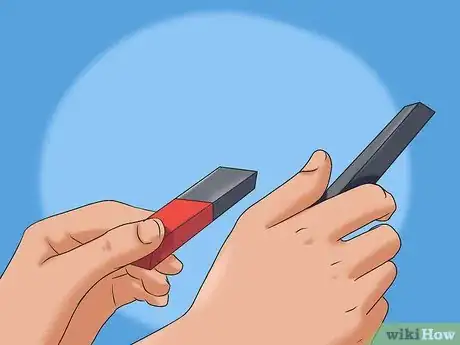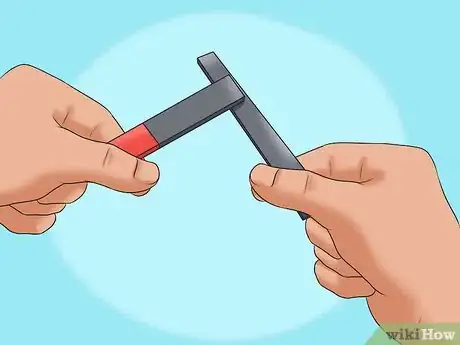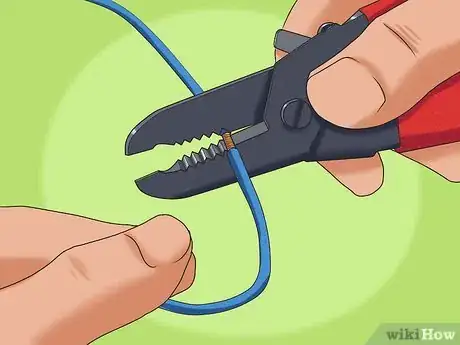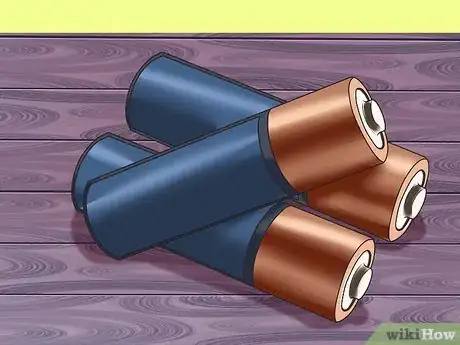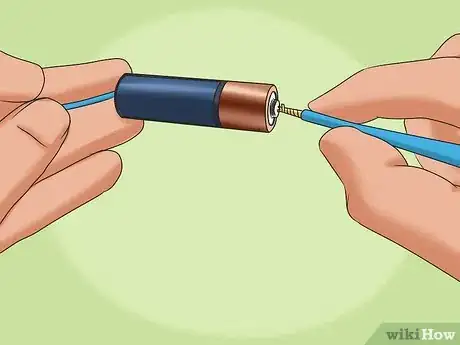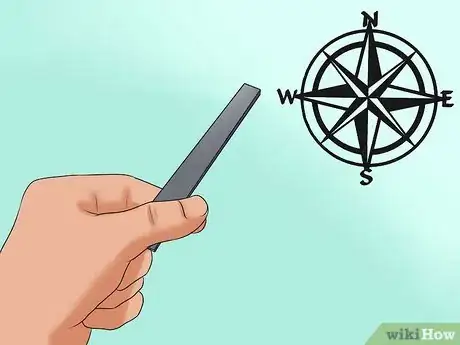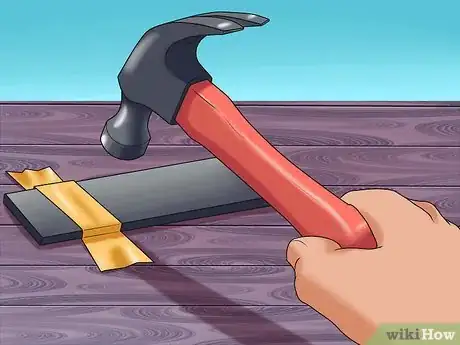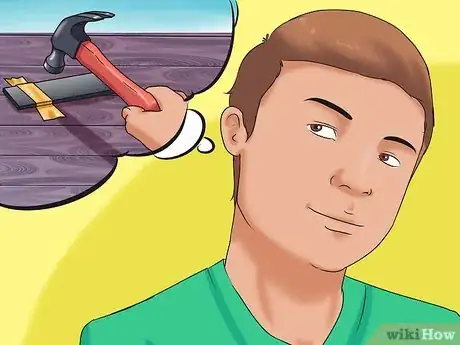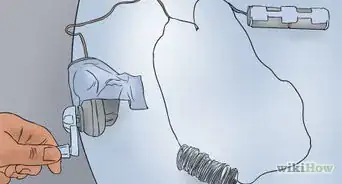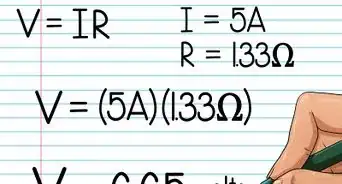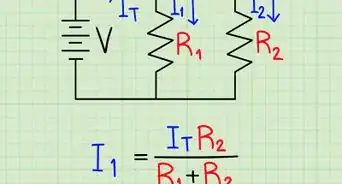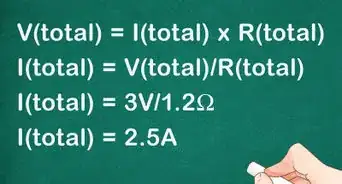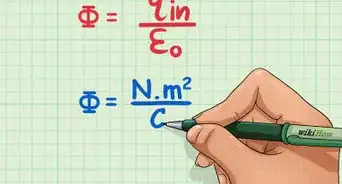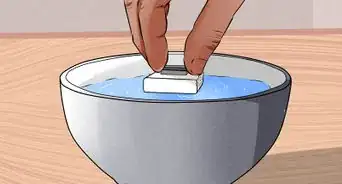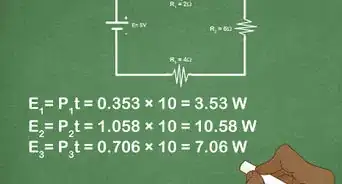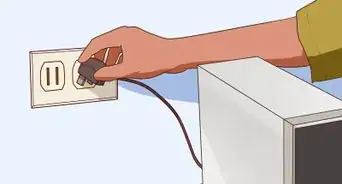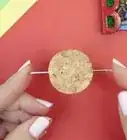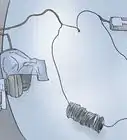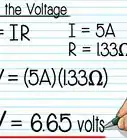This article was co-authored by Bess Ruff, MA. Bess Ruff is a Geography PhD student at Florida State University. She received her MA in Environmental Science and Management from the University of California, Santa Barbara in 2016. She has conducted survey work for marine spatial planning projects in the Caribbean and provided research support as a graduate fellow for the Sustainable Fisheries Group.
There are 13 references cited in this article, which can be found at the bottom of the page.
wikiHow marks an article as reader-approved once it receives enough positive feedback. This article received 17 testimonials and 81% of readers who voted found it helpful, earning it our reader-approved status.
This article has been viewed 311,388 times.
Magnetizing a steel screwdriver before you disassemble a complicated machine makes the task much easier so pieces stick to the screwdriver once they’re loose. It's also an easy experiment to do with children since it only requires a few specialized tools. Check the steel with an existing magnet before you begin: if it doesn't respond, the process will not work.
Steps
Magnetizing Steel Using an Existing Magnet
-
1Use this to quickly make a temporary magnet. Keep a strong magnet around, and you can magnetize some types of steel with a couple minutes of work. This turns the steel into a weak magnet that loses its magnetism over time.[1] This method is ideal for magnetizing a screwdriver, nail, or needle just before use so they are attracted to metal and won’t easily get lost. You can also use it to restore magnetism to an old compass needle or another weakened magnet.
-
2Find a strong magnet. You can use any magnet to "pass on" the magnetism to the steel, but ordinary refrigerator magnets will have a very weak effect. Neodymium or other rare-earth magnets are good options, available at home improvement stores, hobby stores, or specialized online magnet stores.[2]
- You can also purchase a "tool magnetizer" designed for this purpose.
Advertisement -
3Test the steel's reaction to the magnet. If the steel isn’t attracted to the magnet, it can't be turned into a magnet itself. Also note that this method is easiest to use on long, thin pieces of steel, such as screwdrivers or nails, but will work on any shape of steel.[3]
- If you're considering purchasing stainless steel and can't investigate it before buying, ask the manufacturer what type of steel it is. You'll want "ferritic" stainless steel or stainless steel graded as part of the "400 series." Coincidentally, the varieties that can be magnetized tend to be cheaper, but that's not universally true.
-
4Stroke the magnet along half the steel, repeatedly. Hold the steel object in one hand. Stick the magnet anywhere on the steel about halfway along its length, then drag it to one tip. Repeat several times, stroking only in one direction, and only along half of the steel. The more you do this, the more magnetized the steel will become.[4]
- You can magnetize a ball bearing or other small, steel object by rubbing the steel along the magnet, instead of vice versa.
-
5Stroke the opposite end of the magnet along the other half. Flip the magnet over so the other pole touches the steel. Place it against the steel at the midpoint again, but drag it the other way, toward the end of the steel that wasn't rubbed earlier.[5] Repeat until the steel can pick up a paper clip, or continue to rub to increase the strength slightly.
- If you're not sure where the two poles are located on the magnet, test them using a second magnet. One pole will attract a surface of the other magnet, and the opposite pole will repel the same surface.
Magnetize Steel Using a Battery
-
1Strip the insulation off both ends of a wire. Using wire stripping pliers, strip about 1 in (2.5 cm) of insulation from each end of an insulated wire. You'll need enough wire to wrap around your steel object at least 10 times.
- "Enameled wire" with thin insulation will have a stronger effect. Do not use bare wire without insulation, as this will interrupt the current and fail to work.[6]
- Supervise young children while they work with wires.
-
2Wrap the wire around the steel. Leaving a couple inches (several centimeters) of wire at each end, wrap the insulated portion around the steel. The steel will become more magnetic the more times you wrap the wire. Use at least 10 loops for nails, and several dozen for larger objects.[7]
- Alternatively, wrap the wire around a heat-proof plastic tube large enough to insert your steel through.
- If a regular magnet is not attracted to the steel, don't bother trying to magnetize it with a battery. Some types of stainless steel cannot be magnetized.
-
3Select a low-voltage battery. An ordinary 1.5V or 3V battery will provide a safe, DC power source sufficient to magnetize nails or screws. Larger steel objects may require a higher voltage battery, but these will create more heat, and a more dangerous electrical shock if handled improperly. A 12V car battery can be used if it is removed from the vehicle and the safety precautions below are followed, but higher voltages are not recommended.[8]
- Never use an electrical outlet or other AC power supply, as the high voltage could blow your house fuse or create serious safety risks.[9]
-
4Use rubber gloves and rubber-handled tools. These will prevent the electrical current from reaching you. Although low-voltage household batteries are harmless in this respect, you may want gloves anyway as the metal can get quite hot if left in the coil.
-
5Connect the wire ends to the battery. Attach one of the stripped wire ends to the positive terminal of the battery. Attach the other wire end to the negative terminal of the battery. For small household batteries, wrapping the wire around a brass paper fastener will make it easier to keep them together. Place the fastener head on the battery so the wire makes contact, then use tape or rubber bands to attach the fastener arms to the side of the battery.[10] An additional rubber band holding the fasteners in place lengthwise will make a more sturdy connection.
- If using a higher-voltage battery, you may see sparks when the circuit is completed. Only hold the wire by the insulated portion.
-
6Test the steel. An electrical current flowing through the coil creates a magnetic field, which will magnetize any ferromagnetic metal placed inside it. If your variety of steel can be magnetized, it should be able to pick up small iron objects after a short time in the coil.[11]
- Putting magnetized steel through the coil a second time will demagnetize it again.
Magnetizing Steel without Special Tools
-
1Find north. If you have a compass, the needle will point directly to magnetic north. Otherwise finding true north should be good enough for this method.
-
2Arrange the steel so it points north. Put the steel object down, so its longest dimension is laid out north-to-south.
- This method will not work well for small objects or steel balls that cannot be arranged north-south.
-
3Hold the steel in place. Tape the steel down or use a clamp or vise to hold it in place.
-
4Strike the steel with a hammer repeatedly. Bash the end of the steel object repeatedly. The steel will gradually become a weak magnet and get slightly stronger each time you strike it. Test this by holding a paper clip next to the steel periodically.
- Some types of steel cannot be magnetized at home. Try a different steel object if you notice no magnetic effect at all, or switch to iron.
-
5Understand why this works. The added energy from striking the metal allows the atomic-level magnetic domains to rearrange themselves in a magnetic field. Since the planet's iron core produces its own magnetic field, these miniature magnets rearrange themselves to point north. Once enough jostling has occurred, all these miniature magnets pointed in the same direction creates a magnetic effect strong enough for us to notice.[12]
Community Q&A
-
QuestionWhat could magnetize the handle of a dinner knife so that it attracts the other utensils?
 Community AnswerIt depends on the type of dinner knife. If the handle of the dinner knife is made out of steel, you could attempt to rub a magnet over it and magnetize it, but if it is stainless steel - which it usually is - it won't magnetize much. If it is iron, then you can try the same thing, however I doubt you would want to magnetize it much, I can just imagine things flying all over the dinner table.
Community AnswerIt depends on the type of dinner knife. If the handle of the dinner knife is made out of steel, you could attempt to rub a magnet over it and magnetize it, but if it is stainless steel - which it usually is - it won't magnetize much. If it is iron, then you can try the same thing, however I doubt you would want to magnetize it much, I can just imagine things flying all over the dinner table. -
QuestionHow can I do this using everyday items?
 Community AnswerYou can magnetize an iron rod by putting one end to the ground pointing north at 45 degrees and striking the other end with a hammer.
Community AnswerYou can magnetize an iron rod by putting one end to the ground pointing north at 45 degrees and striking the other end with a hammer. -
QuestionHow can I magnetize a steel strip using a permanent bar magnet?
 Community AnswerYou could rub the bar magnet over the steel strip but just in one direction (for example, from bottom to top, coming back to bottom without rubbing it on the way back). Also if you have a lot of time, you can magnetize the strip by leaving it attached to bar magnet for a few days.
Community AnswerYou could rub the bar magnet over the steel strip but just in one direction (for example, from bottom to top, coming back to bottom without rubbing it on the way back). Also if you have a lot of time, you can magnetize the strip by leaving it attached to bar magnet for a few days.
Warnings
- Keep magnets away from hard drives, computer monitors, television monitors, and credit cards or ID cards with a magnetic strip.⧼thumbs_response⧽
- Always use insulated pliers and grab only the insulated portion of the wire when applying it to the positive battery terminal.⧼thumbs_response⧽
- Heat or striking force can jostle the magnetic atoms out of place, reducing or undoing the magnetization.[15]⧼thumbs_response⧽
Things You'll Need
Magnetizing Steel Using an Existing Magnet
- Steel object (not all stainless steel will work)
- Magnet
Magnetize Steel Using a Battery
- Battery (1.5V for nails, up to 12V for larger objects)
- Enameled or insulated wire
- Wire strippers
- Insulated pliers
- Rubber gloves
Magnetizing Steel without Special Tools
- Hammer
References
- ↑ https://sciencing.com/magnetize-demagnetize-metal-8498102.html
- ↑ https://education.nationalgeographic.org/resource/magnetism
- ↑ https://education.nationalgeographic.org/resource/magnetism
- ↑ https://commons.princeton.edu/josephhenry/permanent-magnet/
- ↑ https://www.education.vic.gov.au/school/teachers/teachingresources/discipline/science/continuum/Pages/magnetism.aspx
- ↑ http://electronics.stackexchange.com/questions/77549/how-to-properly-wind-coils-for-a-solenoid
- ↑ https://sciencing.com/make-super-strong-permanent-magnets-6520830.html
- ↑ https://www.teachengineering.org/activities/view/cub_mag_lesson2_activity1
- ↑ http://www.school-for-champions.com/science/electromagnets.htm#.VLst9cZEzS8
- ↑ https://nationalmaglab.org/education/magnet-academy/try-at-home/making-electromagnets
- ↑ https://sciencing.com/make-super-strong-permanent-magnets-6520830.html
- ↑ https://van.physics.illinois.edu/qa/listing.php?id=436
- ↑ http://www.scientificamerican.com/article/why-dont-magnets-work-on/
- ↑ http://www.oersted.com/magnetizing.PDF
- ↑ http://www.school-for-champions.com/science/magnets.htm#.VLmyqcZEzS8
About This Article
If you have a strong magnet and want to temporarily magnetize steel, you can stroke the steel along the magnet repeatedly until the steel holds a charge. This will work best with Neodymium or other rare-earth magnets, especially when you pair it with a slender piece of steel, like a nail or screwdriver. If you don't have a magnet, you can magnetize steel by taping down a piece of steel so that it faces North to South. Then, bang on the steel repeatedly with a hammer until it holds a charge. To learn how to magnetize steel by using a battery, read on!
